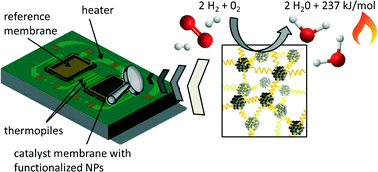Novel nanoparticle catalysts for catalytic gas sensing
Abstract
The state-of-the-art approach to stabilize nanoparticles (NPs) for applications in heterogeneous catalysis is to support them on inert inorganic material, which is limited to low loadings of the catalytic component. However, applications such as catalytic gas sensing require a high density of catalytically active sites at a low total heat capacity. To offer an alternative to the supporting of NPs, the stabilization of catalytic NPs with organic ligands in solid state is presented. Therefore, the preparation strategy, consisting of NP synthesis and subsequent functionalization with mono- and bifunctional ligands, is introduced. The molecular linkage of Pt NPs with bifunctional amine ligands (ligand-linking) results in three-dimensional porous networks with ligand-free surface sites. The catalytic properties of ligand-stabilized NPs were investigated in a thermoelectric hydrogen sensor. In addition to an enhanced activity, the stability of the NPs can be significantly improved by ligand-linking. One reason may be that the bifunctional ligand is anchored on the NPs by two head groups. The criteria for ligand structures to enable a successful NP stabilization were identified. para-Phenylenediamine (PDA) combines the criteria and, consequently, by linking of Pt NPs with PDA a constant catalytic activity over more than 20 h on stream was achieved. Thus, ligand-stabilized NPs are presented as a novel catalyst for catalytic gas sensing.


 Please wait while we load your content...
Please wait while we load your content...